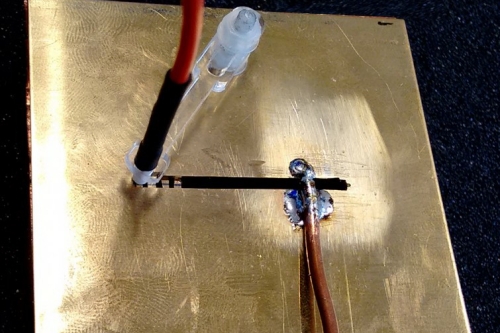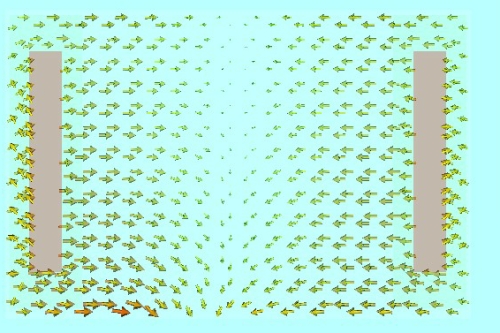15 November 2017
Multiband tunable antennas are a critical part of many communication and radar systems. New research by engineers at the University of Bristol has shown significant advances in antennas by using optically induced plasmas in silicon to tune both radiation patterns and operation frequency.
Conventional antenna tuning is performed with diodes or Micro-Electro-Mechanical Systems (MEMS) switches. However, these approaches have significant drawbacks as systems become more complex and move to higher frequencies, which is anticipated for 5G systems.
The first paper, published in IET Optoelectronics, co-authored by Dr Chris Gamlath, Research Associate in RF Engineering during his PhD, shows how a silicon superstrate placed over a slotted microstrip patch can be used to tune radiation patterns.
The second paper published in IEEE Transactions on Antennas and Propagation, co-authored by Dr Michael Collett during his PhD, demonstrates how silicon can be placed within the slots of an air-spaced, cavity-backed antenna to perform frequency and pattern tuning that achieves high efficiencies.

4.2GHz – 6 GHz optically tunable cavity backed slot antenna. Silicon samples can be seen in the slot and an optical fibre is being held in place over one sample for tuning
Image credit: University of Bristol
The research could dramatically improve the performance of future communication and radar systems because without this technology, it may not even be possible to implement certain types of 5G systems.
Martin Cryan, Professor of Applied Electromagnetics and Photonics in the Department of Electrical and Electronic Engineering at the University of Bristol and co-author on the papers, said: "This technology relies on the interaction between light and a semiconductor such as silicon. When the semiconductor is illuminated by an appropriate wavelength of light, the photons generate electrons and holes which increase the conductivity in the silicon creating a "metal-like" region. Microwave signals can then interact with these conductive regions and with correct design, tunable antennas and circuits can be created.
"One major advantage of this approach is that no physical connection to the silicon is required, unlike diodes or MEMS switches that require complex DC Biasing circuits. This can dramatically simplify the design of multi-element antennas, which are required in Multiple-Input Multiple-Output (MIMO) systems and phase array radars. There is a requirement for lasers or LEDs to be used within the system, but the cost and performance of these have improved significantly in recent years."
Professor Cryan's research team is now working on moving to millimetre wave (>30GHz) frequencies and to very high power levels where this technology will again out-perform existing technologies.
Papers:
'Investigation of an optically induced superstrate plasma for tuning microstrip antennas' by Chris Galmath et al in IET Optoelectronics
'An optically tunable cavity-backed slot antenna' by M. A. Collett, C. D. Gamlath, and M. J. Cryan in IEEE Transactions on antennas and propagation













